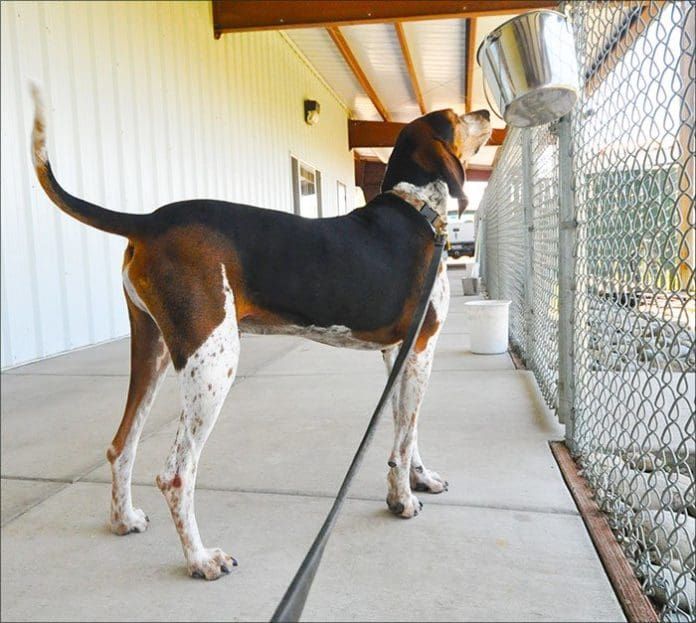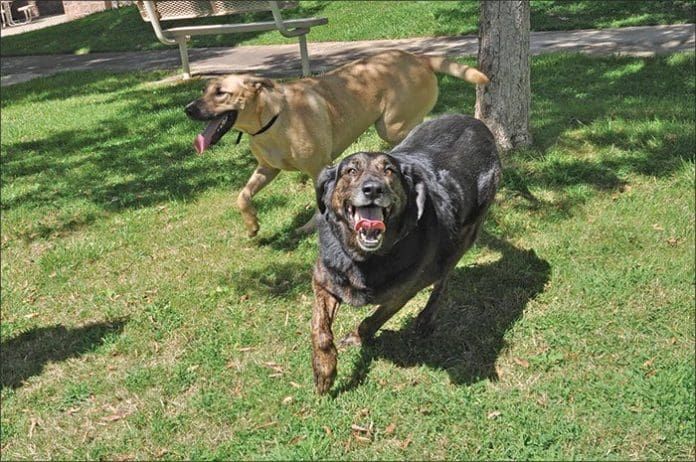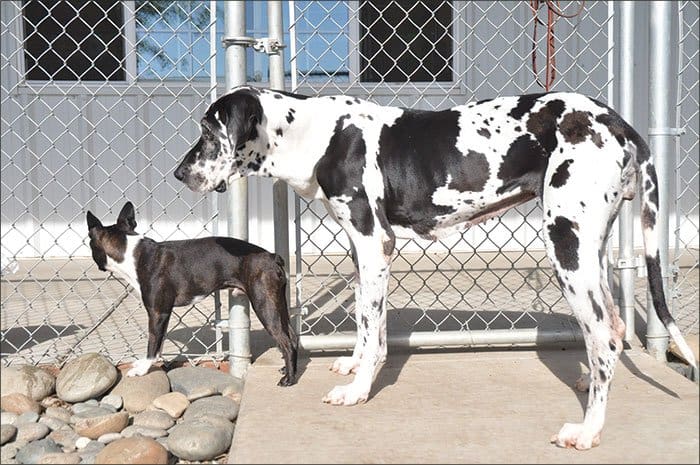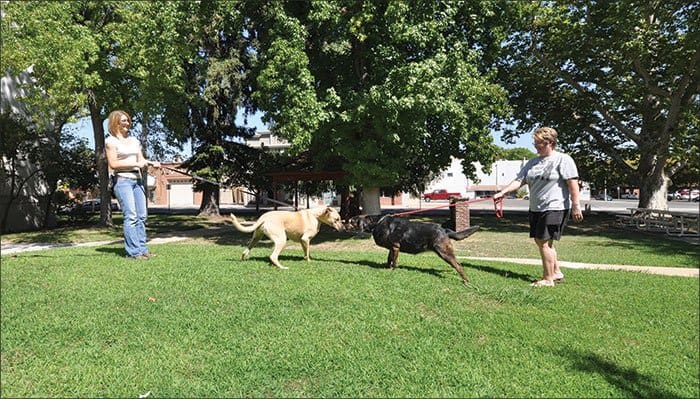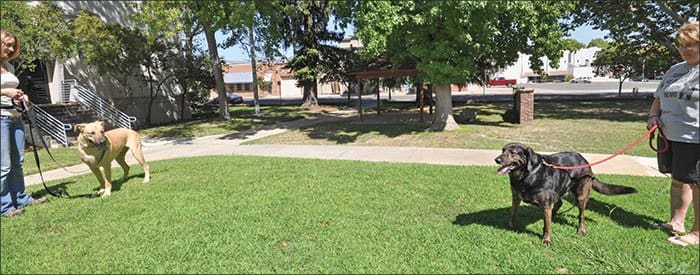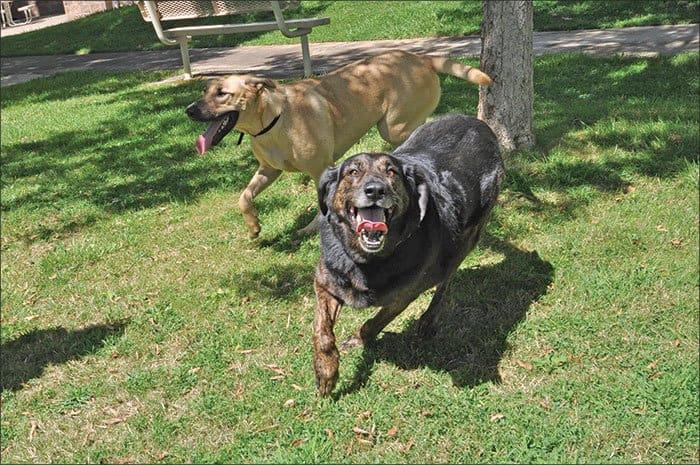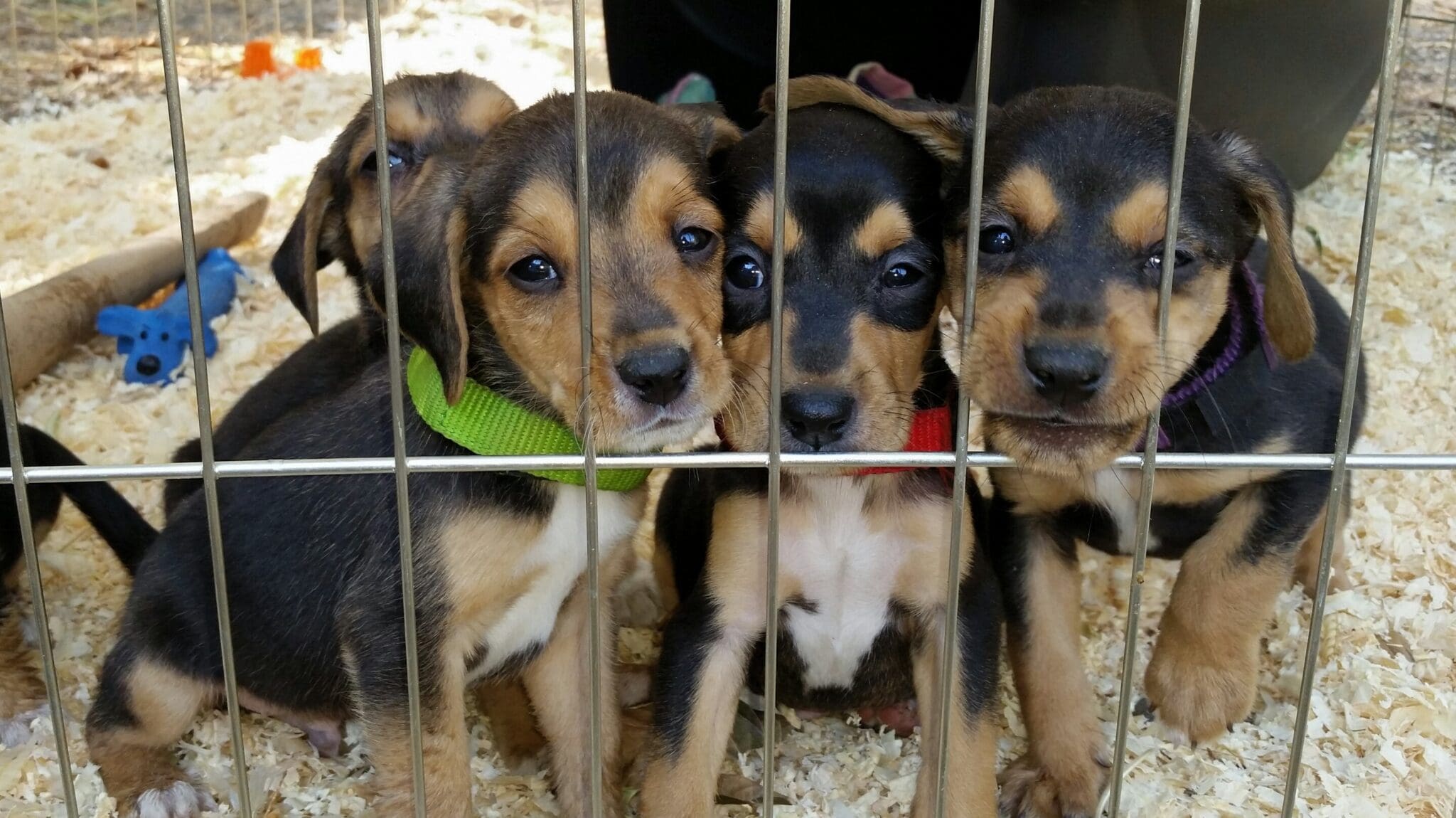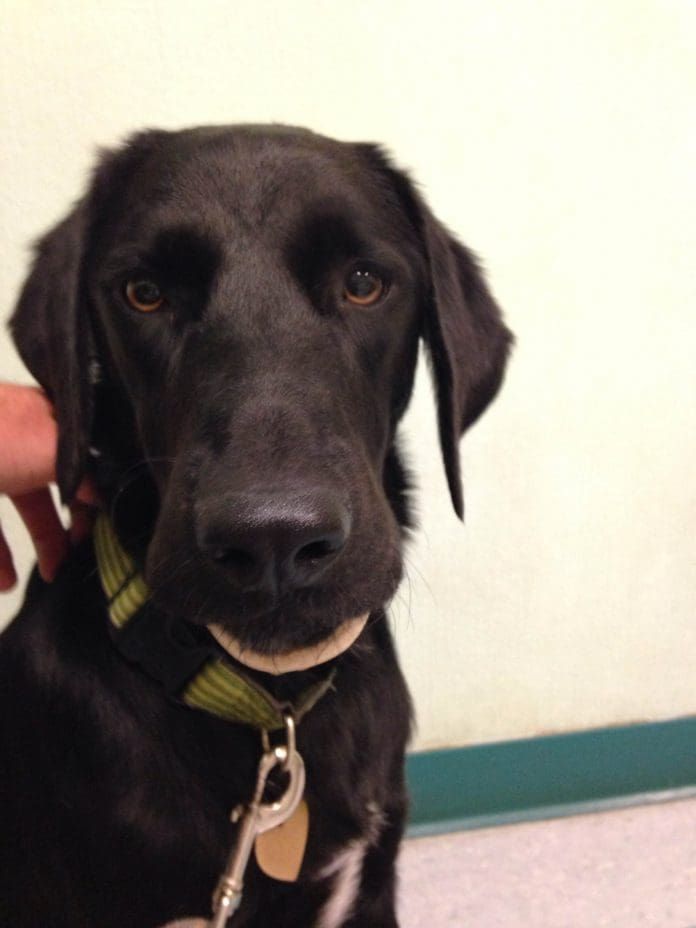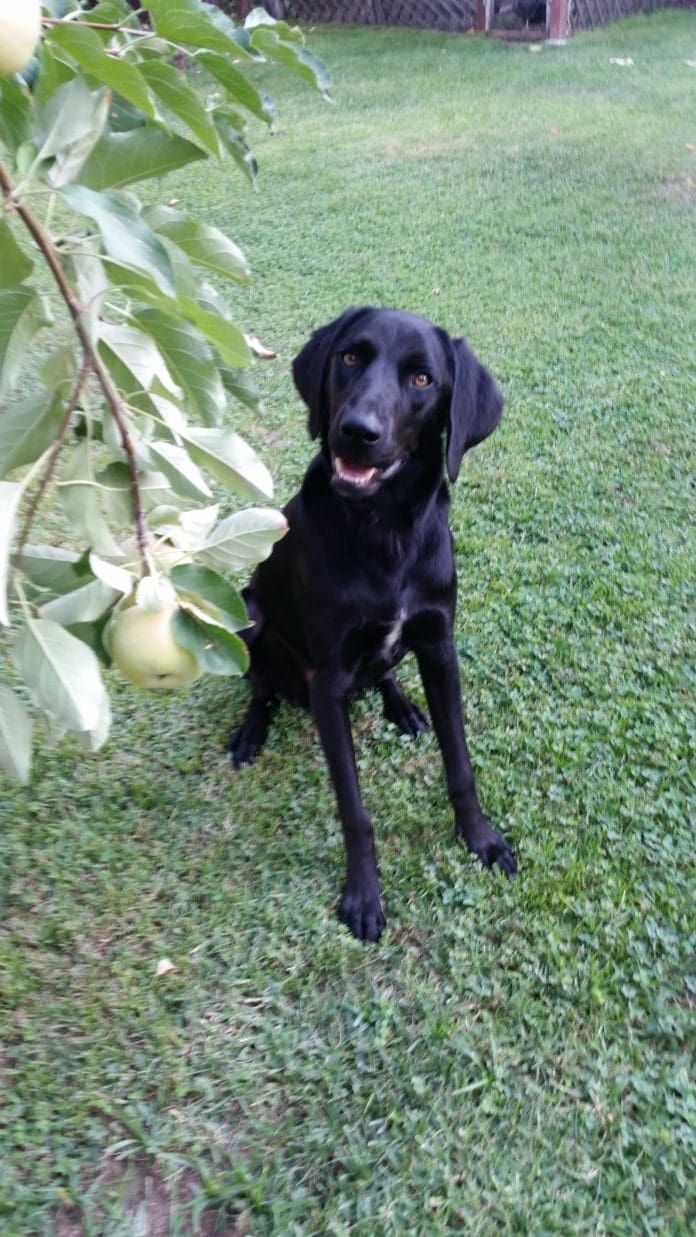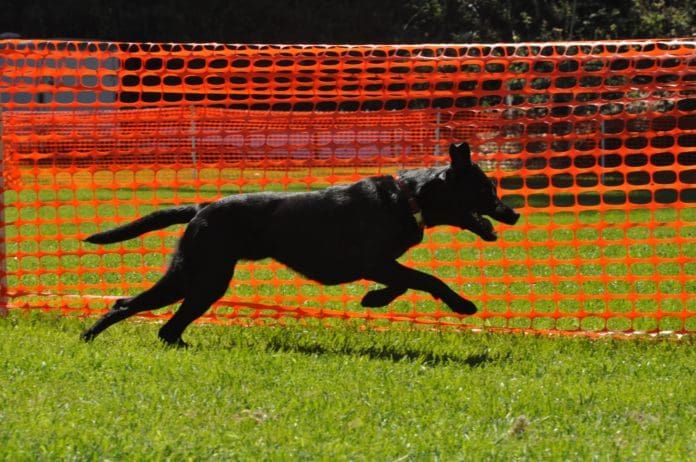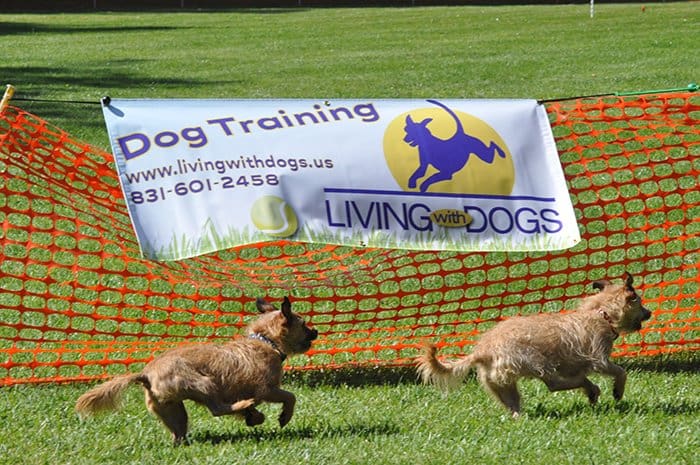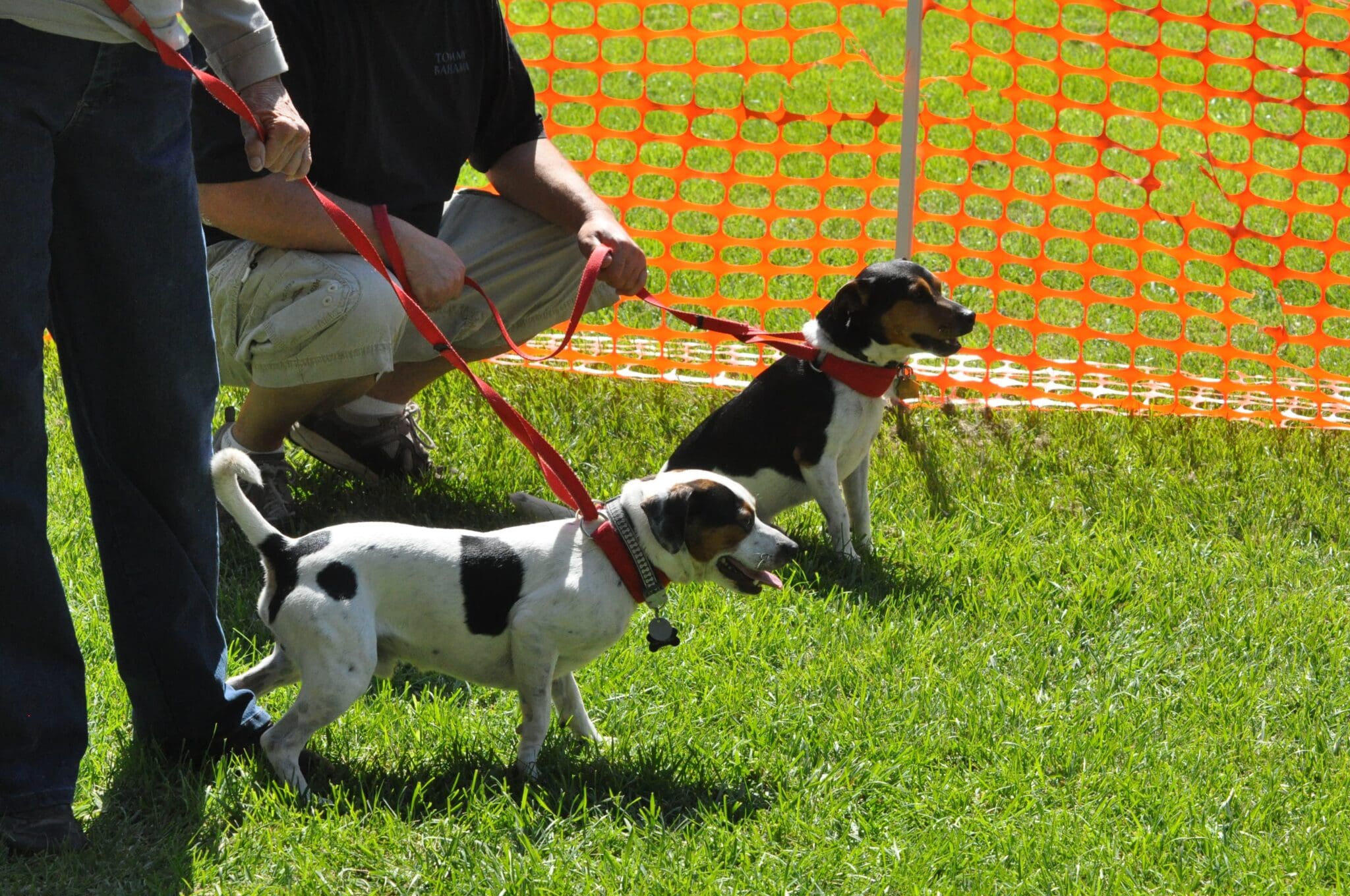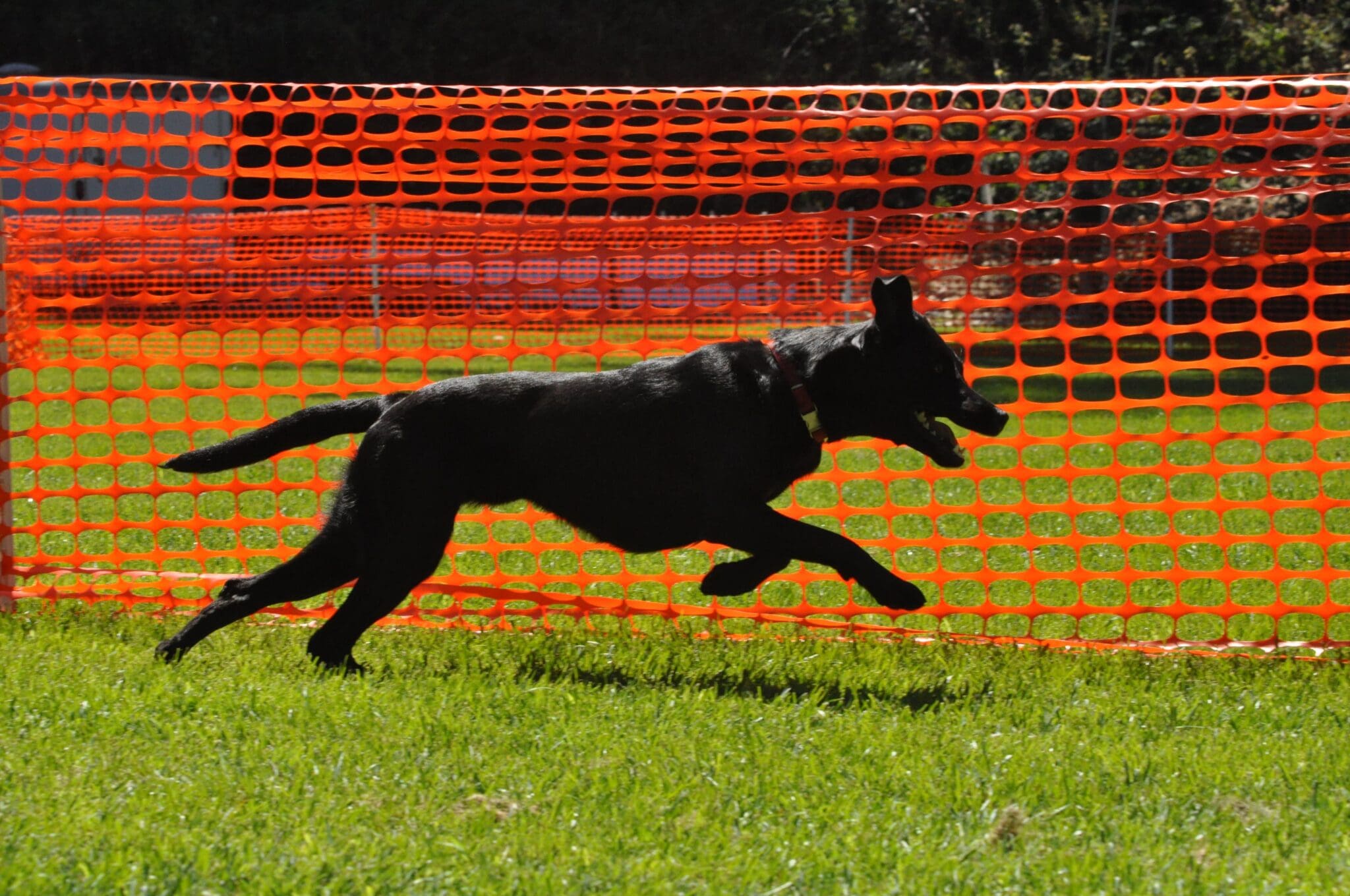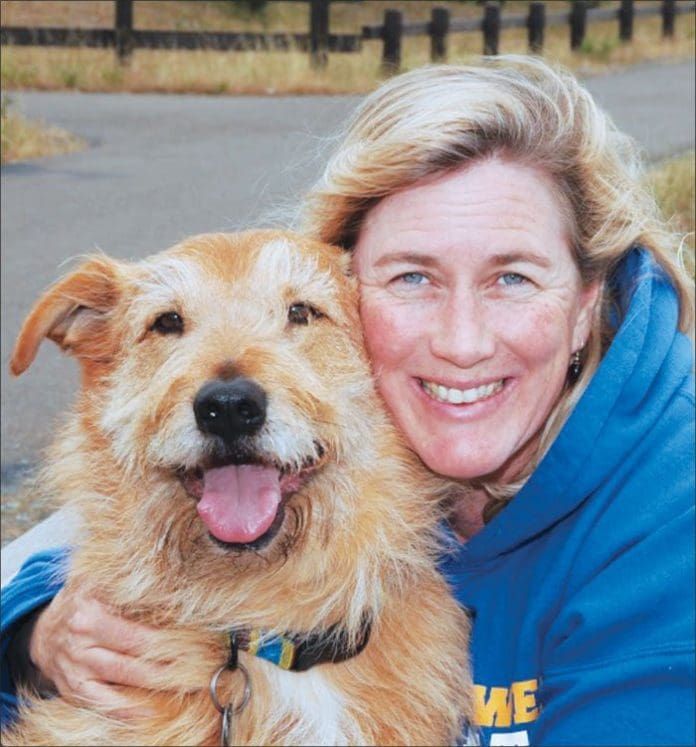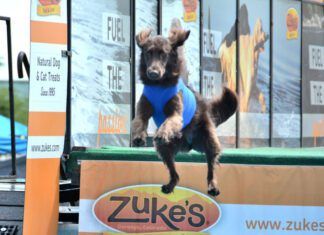The dog’s nose is an amazing organ, with abilities and features far superior to our own in many ways. First are the physical adaptations of the nose itself. The inside of the dog’s nose is lined with many folds of tissue (called the olfactory epithelium), which in turn contain hundreds of millions of olfactory receptors, specialized cells responsible for detecting odors. Because of the increased surface area caused by these folds, the dog’s nose contains a ridiculously high number of receptor cells when compared to the human nose; on average, the dog has about 220 million, while our noses harbor a paltry 5 million. This difference contributes to the dog’s ability to detect almost impossibly minute concentrations of compounds, by some estimates in concentrations as low as parts per trillion.

The dog’s brain is also highly adapted for smelling. From the receptors in the nose, sensory input travels to the olfactory bulb and olfactory cortex, regions of the brain that are highly developed in dogs and that process and interpret the incoming tsunami of odor sensations.
A final adaptation that dogs have (and that we do not) is a special kind of sniff. In dogs, sniffing involves a disruption of the dog’s normal breathing pattern as small amounts of air are rapidly inhaled and exhaled. This type of breathing changes the shape of the dog’s nostrils and diverts air into several flow paths within the nose. This partitioning increases the number of sensory cells that inhaled particles come into contact with, thus enhancing olfactory sensitivity.
And the power of the sniff does not end there. As the dog exhales, air leaves via the dog’s “side nostrils,” not out the front of the nose as it does with normal breathing. Exhaling through the side nose is presumed to prevent the dog’s sensory cells from being repeatedly exposed to the same compounds, delaying scent habituation. (Consider how you no longer can smell “wet dog” after being around one for a while. That’s scent habituation.)
Today, the dog’s extraordinary olfactory abilities are put to a lot of human uses. Dogs are trained to indicate the presence of contraband, find lost people (and sometimes, animals), search natural-disaster areas, and even find victims of drowning. We also train our dogs to use their noses in a wide range of dog sports such as tracking, obedience, and nose work.
Another talent that dogs (at least some dogs) may possess and that is receiving increasing attention is the ability to detect the presence of disease in human patients. While the detection of several chronic health problems has been examined, including diabetes, seizure disorders, and heart disease, the dog’s ability to identify the presence of cancer in human patients as a diagnostic early-screening approach is especially intriguing.
It Started with a Mole-Sniffing Border Collie
Almost 25 years ago, a letter from two doctors was published in the scientific journal The Lancet. The letter described the case of a 44-year-old woman whose Border Collie-mix had started to fixate on a mole located on her leg. Over a period of several weeks, the dog repeatedly sniffed and licked the area, eventually escalating his behavior to biting at the spot. Concerned, the owner visited her doctor, only to discover that the mole had developed into a malignant melanoma.
Over the next few years, an increasing number of similar cases were reported, all variations of the scenario in which a pet dog spontaneously alerted his or her owner to the presence of a cancerous tumor. And these were not just mole fixations – dogs were reportedly finding a wide range of disease, including bladder, breast, lung, prostate, and ovarian cancers. As anecdotal evidence, these cases raised the question of whether dogs could be trained to reliably detect cancer and ultimately be used as screening aids for diagnosing malignancies at an early stage.
The Studies
A wide range of research studies has examined the use of dogs to detect cancer, which is remarkable given the relatively few years of interest in this area of study. However, while the total number of studies is high, they vary tremendously in significant factors such as type of cancer; the number, breed, and age of dogs; training methods; and the type of samples used for detection. Cancers that have been studied include skin (melanoma), prostate, lung, breast, bladder, and colorectal. Dogs have been trained to detect cancer using tumor cells, urine, blood, feces and exhaled breath.
Although not always reported, all of the described training methods used positive reinforcement, and several studies employed clicker training. However, training methods, intensity and duration have differed, as has the experience level of the trainers involved.
Keeping these disparities in mind, have we learned anything of a general nature from these studies? First, the good news: Dogs can do this (at least under controlled, experimental conditions). For example, a Belgian Malinois selected from a group of dogs being trained for explosives-detection work was professionally trained to differentiate between the urine of healthy men and the urine of men with prostate cancer. The Malinois successfully identified cancer in 31 of 33 cases.1
Another study tested the ability of a professionally trained scent-detection dog to identify the presence of colorectal cancer in stool and breath samples.2 When tested in 37 trials, the dog correctly identified cancer when it was present 91 percent of the time and missed a correct diagnosis just 1 percent of the time.
In the largest of the published studies, four trained dogs were tested using 220 breath samples from patients suspected of having lung cancer.3 The dogs accurately identified lung cancer 71 percent of the time, although there was a great deal of variation among the four dogs in their ability to correctly detect cancer when it was present (called sensitivity). This variability may have occurred because the researchers used pet dogs for the study rather than dogs who were specifically selected for scent-discrimination tasks, as were the dogs in the previous studies.
Similar inconsistencies among dogs were reported when experimenters trained a group of six unselected (pet) dogs for detection of melanoma, breast, or lung cancer.4 While most studies trained dogs to detect a single type of cancer, one group of researchers tested five dogs who were trained to detect either lung or breast cancer.5 They reported almost 100 percent accuracy when the dogs were tested with lung-cancer patients and almost 90 percent accuracy when they were tested with breast-cancer patients.
Success at varying rates has also been reported in dogs trained to detect bladder cancer in urine samples, ovarian cancer in blood or tissue, and melanoma from skin-tissue samples. 6,7,8
Proof of Principle versus Use in Practice
Most of the currently available studies make the point that their results should be viewed primarily as “proof-of-principle” studies. In other words, these studies show us that, yes, dogs have extraordinary scenting capabilities and also that some dogs can be successfully trained to reliably detect the presence of cancer in human tissues. Pretty cool stuff, indeed. Taken at this level, I think most would agree that the results of the current cancer-detection studies provide additional evidence to the already multitudinous piles that the dog has a remarkable nose. Most dog people, myself included, are pretty darned impressed by these data.
However, the jump from knowing that dogs can do this amazing feat to using dogs as early screening detectors for cancer in human patients is one very big (and perhaps unattainable) jump. There are a number of obstacles that need to be cleared for such a role to become reliable, economical, and accepted by medical professionals and patients. Perhaps most important is to first attain a better understanding of what exactly these dogs are doing.
What are they smelling when dogs detect cancer?
Cancer cells, along with some of the changes that occur in the body in response to cancer, produce a wide range of unique substances that emit very specific odors. As a group these are called volatile organic compounds (VOCs), which means that they contain carbon atoms and have airborne properties (i.e., they can be sniffed).
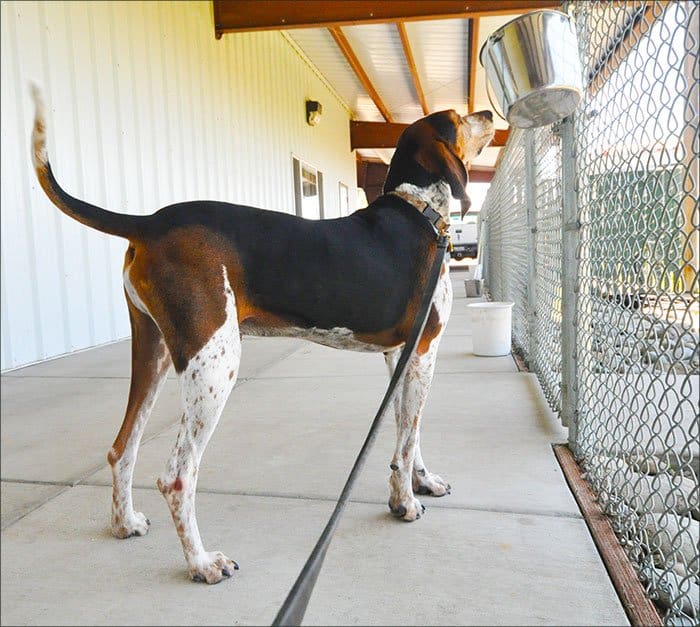
Because the set of VOCs varies with the type of cancer, researchers refer to these collectively as a cancer’s “odor signature.” However, there are gaps in our knowledge about these compounds. First, not all of the biologically significant molecules that are produced by cancer cells have been identified, nor do researchers have well-defined odor signatures for all forms and stages of cancer. Although each cancer is presumed to possess a unique set of VOCs, these may vary with stage of disease, location of the tumor, presence of other illnesses, and with the age, health, or genetic make-up of the patient. Similarly, the type of sample that is used (urine, breath, tissue) is expected to affect which VOCs are present.
It is presumed, but not known, that dogs who can successfully differentiate between non-cancerous, healthy cells and cells or secretions that are cancerous are detecting the presence of that cancer’s odor signature – its particular set of VOCs. It is also presumed that most of these odors exist at levels that are undetectable by the human nose but are present at levels that a dog’s nose is capable of detecting. The problem lies in understanding exactly which compound or compounds in the overall signature that the dogs are learning to detect.
From a practical standpoint, this means that dogs are being trained to detect a cancer odor signature that is still incompletely understood and to compounds that as of yet have not been identified. Therefore, if a dog who has completed training misdiagnoses a sample, it is impossible to troubleshoot errors to determine the reason that the dog failed, since we do not know exactly what the dog is looking for or if the compound is consistently found in all patients, of all ages, and all stages of disease with that particular cancer.
Scent memory?
It is known that the dog has an astounding ability to form “scent memories.” This means that dogs are capable of recognizing odors that they have encountered previously, and that they have a high capacity to store memories of a large number of individual odors.
A helpful analogy is to consider how many faces you recognize of people you have met during your lifetime. For most of us, this is a really large number; most of us readily recognize people who we may have only met a few times or have not seen in a long time. Research has shown that humans have an astounding ability to remember up to thousands of faces, even those that we have experienced only via photographs! Think of the dog’s nose in the same way. While we excel at recognizing human faces, the dog excels at recognizing distinct odors. This is an important consideration given that we do not know exactly what it is that dogs are smelling when they detect cancer in an experiment.
This is of consequence because training dogs for scent-detection work involves taking a set of known (target) odor samples that are repeatedly used to teach the dog to identify and indicate the target odor. For cancer-detection training, these samples come from patients who are confirmed to have a particular type of cancer. Such samples are a limited resource, both in terms of the number that can be obtained from medical centers and in sample viability (i.e., how long they can be stored and retain their scent odor for reuse).
On a practical level, this means that most dogs used in these studies have been trained using a relatively small set of cancer-containing samples. Once they are trained and are demonstrating proficiency on the known samples, the dogs are then tested on either planted samples (healthy patients with hidden cancer samples on their body) or with actual patients.
A challenge that researchers have faced is determining whether dogs are generalizing what they have learned during training on a small set of samples to the general population of patients, whose scent signatures will vary in unknown ways. Have the dogs learned to identify a general cancer odor signature or have they simply memorized some components of the samples that they were trained with? If it is the latter, the dogs would be expected to fail when tested using a large population of patients (who may or may not have a similar odor signature to the training set).
A recent study using dogs trained to detect prostate cancer attempted to tackle the issue of scent memory.9 The researchers clicker-trained 10 dogs through three incremental stages of training to detect prostate cancer from urine samples. At the conclusion of the training, only two dogs demonstrated high proficiency in detecting cancer using the training samples. These dogs were then tested on a large set of unique samples (both cancer and controls).
During the actual tests, neither of the dogs successfully differentiated between cancer samples and healthy samples at a frequency that was greater than that expected by chance. As a possible explanation for this failure, the researchers suggested that during training, the dogs had memorized the odors of each of the training samples, and while they clearly were able to discriminate between those samples and healthy patient samples, they did not subsequently generalize that ability to the odor signature present in the urine of the large group of prostatecancer patients that was tested.
It must also be mentioned that like some of the earlier studies that demonstrated low proficiency, the dogs in this study were selected from a group of pet dogs whose owners were attending a local dog-training school, rather than from dogs who were specifically selected and trained for scent work.
Can dogs smell other illnesses?
Most of the studies reported to date have tested dogs’ accuracy at cancer detection against samples from healthy volunteers. However, many people who have cancer also have other health problems or benign disease. Because false positives cause extreme anxiety and can lead to unneeded biopsies or treatment, minimizing this type of error is of enormous importance when considering the reliability of early-screening techniques. While it appears that some dogs are capable of consistently discriminating between healthy and cancerous patients, can they make this distinction when faced with people who may have complicating disease?
Only two studies have tested this ability. The large lung-cancer study discussed previously also tested the ability of their four trained dogs to differentiate between patients with confirmed lung cancer and patients afflicted with another (non-cancerous) lung disease, chronic obstructive pulmonary disease (COPD).3 They found that while the dogs were still capable of identifying patients who had lung cancer, their success rate decreased somewhat when they had to distinguish between cancer and COPD.
A more recent study, published in early 2014, was less promising.10 Four trained dogs were found to be highly effective when distinguishing between patients who were healthy (had no lung disease) and patients who had some type of lung disease. However, when tested to determine if they could distinguish between benign and cancerous lung tumors, the dogs’ accuracy decreased dramatically. For example, the dogs performed with 99 percent sensitivity in the initial tests of healthy versus not-healthy patients, but this decreased to 56 to 76 percent (depending on the dog), when they were required to discriminate between malignant and benign lung conditions. This means that up to 44 percent of the cases were identified as cancerous when they were not (false positives) – not a good result for a cancer-screening tool.
Not There Yet
As dog lovers, we all would like to see cancer detection turn out to be one more job our beloved dogs can help us accomplish. We all want to believe that dogs can be trained to reliably predict the presence of cancerous cells in a human patient, and that once we have the training properly nailed down, these dogs will show themselves to be superior to other screening tests that may be invasive in nature, costly, or not sensitive enough to catch cancer in its early stages.
But at this point in the game, it appears that only some dogs are able to detect some cancers some of the time, and that this detection is most successful when dogs are carefully selected for scent-training work and when they are asked to compare potential cancer patients with healthy patients. Challenges lie ahead in determining what exactly it is that dogs are sniffing; refining and standardizing training; increasing accuracy and reliability; and completing more rigorous, double-blind, well-controlled studies.
Regardless, in my view, because these studies do provide “proof of principle,” they give us one more reason to be in awe of and thankful for our canine friends and their amazing sniff(th) sense!
Linda P. Case, MS, is the owner of AutumnGold Consulting and Dog Training Center in Mahomet, Illinois, where she lives with her four dogs and husband Mike. She is the author of Dog Food Logic and many other books and publications on nutrition for dogs and cats. Her blog can be read at thesciencedog.wordpress.com.
Cited References:
1. Cornu JN, Cancel-Tassin G, Ondet V, Giradet C, Cussernot O. Olfactory detection of prostate cancer by dogs sniffing urine: A step forward in early diagnosis. European Urology 2011; 59:197-201.
2. Sonoda H, Kohnoe S, Yamazato T. Colorectal cancer screening with odour material by canine scent detection. Gut 2011; 60:814-819.
3. Ehmann R, Boedeker E, Friedrich U, Sagert J, Dippon J, Friedel G, Walles T. Canine scent detection in the diagnosis of lung cancer: Revisiting a puzzling phenomenon. European Respiration Journal 2012; 39:669-676.
4. Walczak M, Jezierski T, Gorecka-Bruzda A, Sobczynska M, Ensminger J. Impact of individual training parameters and manner of taking breath odor samples on the reliability of canines as cancer screeners. Journal of Veterinary Behavior 2012; 7:283-294.
5. McCulloch M, Jezierski T, Broffman M, Hubbard A, Turner K, Janecki T. Diagnostic accuracy of canine scent detection in early- and late-stage lung and breast cancers. Integrative Cancer Therapies 2006; 5:30-39.
6. Willis CM, Church SM, Guest CM. Olfactory detection of human bladder cancer by dogs: proof of principle study. British Medical Journal 2004; 329:712.
7. Pickel D, Manucy GP, Walker DB, Hall SB, Walker JC. Evidence for canine olfactory detection of melanoma. Applied Animal Behaviour Science 2004; 89:107-116.
8. Horvath G, Andersson H, Paulsson G. Characteristic odour in the blood reveals ovarian carcinoma. BMC Cancer 2010; 10:643-646.
9. Elliker KR, Sommerville BA, Broom DM, Neal DE, Armstrong S, Williams HC. Key considerations for the experimental training and evaluation of cancer odour detection dogs: Lessons learnt from a double-blind, controlled trial of prostate cancer detection. BMC Urology 2014; 14:22-31.
10. Amundsen T, Sundstrom S, Buvik T, Gederaas OA, Haaverstad R. Can dogs smell lung cancer? First study using exhaled breath and urine screening in unselected patients with suspected lung cancer. Acta Oncologica 2014; 53:307-315.


